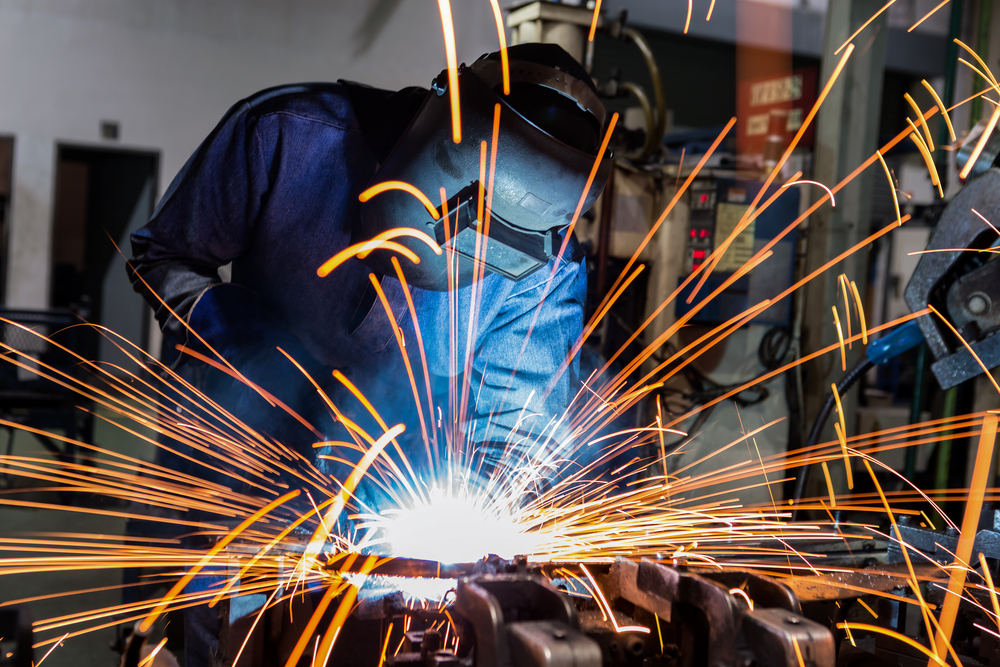The Benefits of Welding: Unlocking the Power of Joining Metals
At [Your Company], we understand the immense potential and significance of welding in various industries. Welding, the process of joining metals together, offers a myriad of benefits that can revolutionize the way we build and create. In this article, we will explore the remarkable advantages of welding and how it can enhance productivity, durability, and efficiency.
Increased Strength and Durability
One of the primary benefits of welding is its ability to create strong and durable joints between metals. By melting and fusing the base metals, welding forms a bond that is often even stronger than the individual metals themselves. This strength ensures the longevity and reliability of welded structures, making them ideal for applications that require robustness and resilience.
Enhanced Structural Integrity
Welding plays a crucial role in enhancing the structural integrity of various objects and constructions. By seamlessly joining metal components, welding eliminates weak points, such as fasteners or mechanical connectors, which can compromise the overall strength of a structure. Welded joints distribute the load evenly, ensuring stability and reducing the risk of failure or collapse.
Versatility and Adaptability
Welding offers unparalleled versatility and adaptability, making it suitable for a wide range of applications. Whether it’s constructing buildings, manufacturing machinery, or creating intricate artwork, welding provides the flexibility to work with different metals, shapes, and sizes. This adaptability makes welding an indispensable tool in industries such as automotive, aerospace, construction, and even art and design.
Cost-Effective Solution
When compared to alternative methods of joining metals, welding proves to be a cost-effective solution. While initial setup costs may be higher, the long-term benefits outweigh the investment. Welded joints require minimal maintenance and have a longer lifespan, reducing the need for frequent repairs or replacements. Additionally, welding eliminates the need for additional fasteners or connectors, saving both time and resources.
Increased Efficiency and Productivity
Welding significantly enhances efficiency and productivity in manufacturing and construction processes. The ability to join metals quickly and securely allows for streamlined production, reducing assembly time and labor costs. Welding also enables automation, as robotic welding systems can be programmed to perform repetitive tasks with precision and consistency.
Environmental Benefits
Welding promotes environmental sustainability by minimizing waste and energy consumption. Unlike other joining methods that require additional materials, such as adhesives or fasteners, welding relies solely on the base metals. This reduces the amount of waste generated and eliminates the need for disposal of potentially harmful substances. Moreover, welding consumes less energy compared to alternative processes, contributing to a greener and more efficient manufacturing industry.

From increased strength and durability to enhanced structural integrity, welding offers a multitude of benefits that are indispensable in various industries. Its versatility, cost-effectiveness, and contribution to efficiency make it a valuable tool for manufacturers, builders, and artists alike. By harnessing the power of welding, we unlock endless possibilities for innovation and progress.
Frequently Asked Questions about the Benefits of Welding
1. What are the advantages of welding?
Welding offers several benefits, including:
Strong and durable joints
Ability to join different types of metals
Cost-effective compared to other joining methods
High production efficiency
2. Can welding be used in various industries?
Yes, welding is widely used in industries such as automotive, construction, aerospace, and manufacturing. It is a versatile process that can be applied to various materials and applications.
3. Does welding provide structural integrity?
Absolutely! Welding creates strong and reliable joints, ensuring structural integrity in buildings, bridges, vehicles, and other structures. It allows for the fabrication of complex and sturdy designs.
4. Are there any environmental benefits of welding?
Yes, welding can have environmental advantages, such as:
Reduced material waste
Lower energy consumption compared to alternative methods
Minimal emissions when using clean welding processes
5. Can welding save costs?
Definitely! Welding is a cost-effective joining method due to:
Lower material costs
Increased production efficiency
Reduced maintenance and repair expenses
6. Is welding a safe process?
Welding can be safe when proper precautions are taken. It is important to follow safety guidelines, wear protective gear, and ensure proper ventilation to minimize risks associated with welding, such as fumes and arc radiation.
7. Does welding allow for design flexibility?
Absolutely! Welding provides design flexibility, allowing for the creation of intricate and customized structures. It enables the joining of different shapes and materials, expanding design possibilities.
8. Can welding improve productivity?
Yes, welding can significantly improve productivity due to:
Fast and efficient joining process
Ability to automate welding tasks
Reduced setup and changeover times
9. Are there any long-term benefits of welding?
Definitely! Some long-term benefits of welding include:
Extended lifespan of welded structures
Reduced need for maintenance and repairs
Enhanced product reliability
10. Can welding contribute to innovation?
Absolutely! Welding plays a crucial role in innovation by enabling the development of new products, improving manufacturing processes, and supporting technological advancements in various industries.




